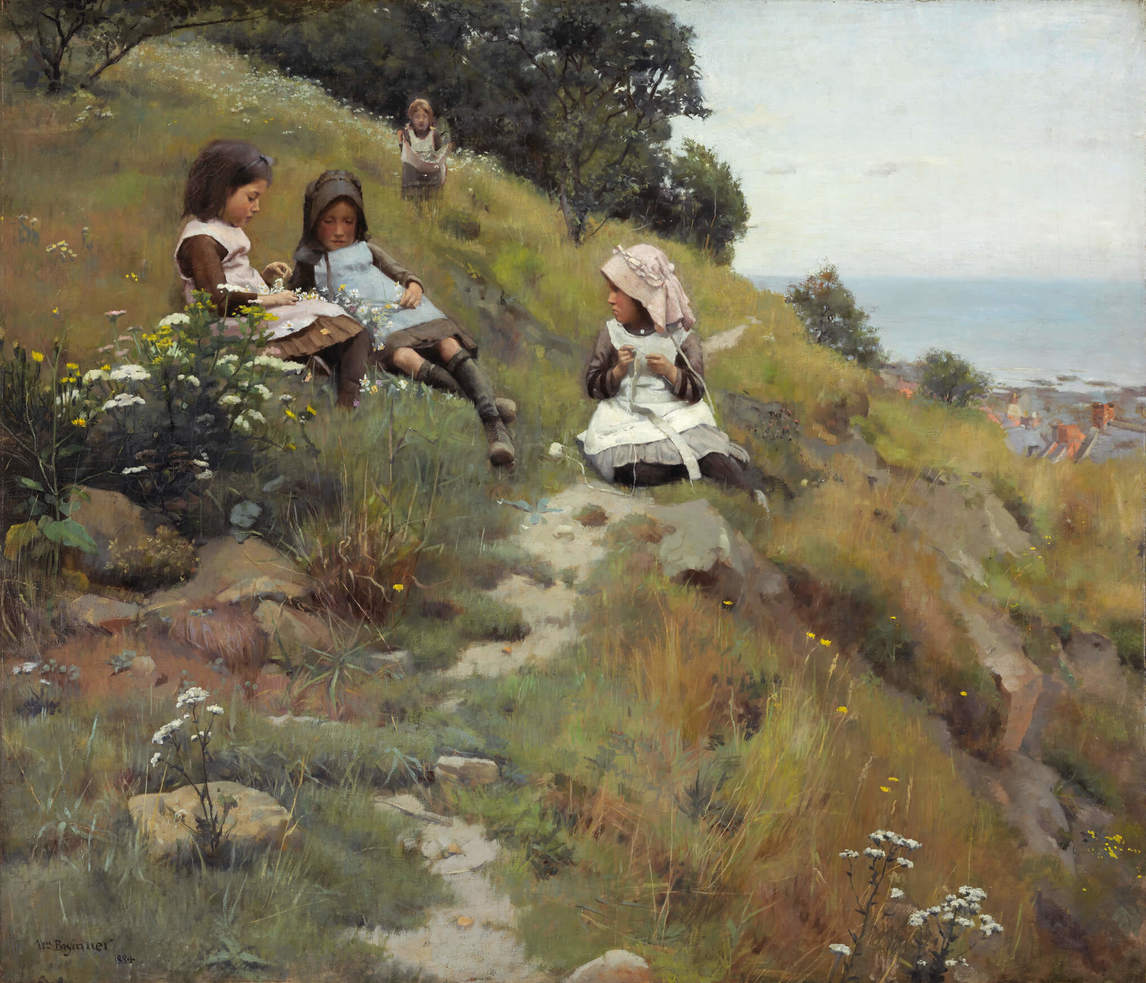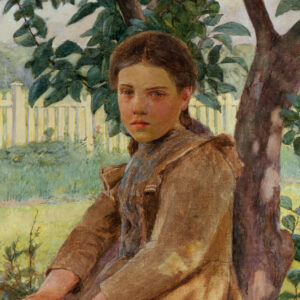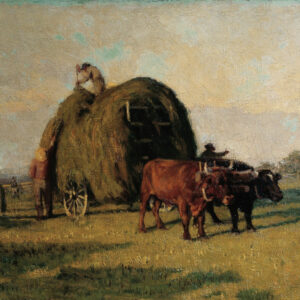A Wreath of Flowers 1884

William Brymner, A Wreath of Flowers, 1884
Oil on canvas, 122.5 x 142.7 cm
National Gallery of Canada, Ottawa
This deceptively simple painting of girls sitting on a hillside making a wreath of flowers was created during Brymner’s visit to Runswick Bay, Yorkshire, from May to November 1884 (he worked on the painting periodically throughout his visit, finishing it shortly before he left the village). A Wreath of Flowers was a critical success for Brymner and a turning point in his early career as an artist. At the time, he described this work as his “magnum opus” and agonized over whether to send it to the Royal Academy of Arts in London or the Royal Canadian Academy of Arts for exhibition—he eventually decided on the latter. Today, many consider A Wreath of Flowers his best-known painting.

By the summer of 1884 Brymner felt a tremendous pressure to sell more of his work so that he would no longer have to ask his father for money. The trip to Yorkshire was strategic: he believed it would be affordable, and he had heard “that English subjects sell much better in England than foreign ones.” Over the course of the summer he worked on a number of different paintings, such as One Summer’s Day, 1884.
Brymner decided on the basic composition of A Wreath of Flowers in early summer and began a number of sketches. He had met many people in the community, and he asked local children to pose. Although he did not record the names of the children, he did note how challenging they were as models: “The difficulties of painting children the size mine are are awful. Keeping the pose for two minutes and then doing something altogether different for 10 nearly drives me wild sometimes, but they are prettier than anything else which keeps me at them.” The presence of clouds in the painting is significant because Brymner would not work when the weather was “too sunny,” so the tones are soft—a reflection of the diffused light.
Compositionally, the work is complex and surprising. The diagonal cut of the landscape is dramatic, and the hillside is crowded with wildflowers, rocks, and clumps of grasses. The girls’ figures are crisp and clear, but parts of the landscape are indistinct, almost smudgy. Colours create echoes and balance throughout the scene, from the blue sky and smock on the girl in the centre of the group to the grey undertones that establish an overall muted feel to the work—even the pink bonnet of the girl on the right and the pink pinafore of the girl at the left are greyish. Stylistically, this painting is typical of Brymner’s oeuvre in that it refuses any neat labelling. Its carefully modelled figures represent the influence of Brymner’s French academic training and perhaps especially of his teacher William Bouguereau (1825–1905). Its outdoor setting reflects Brymner’s commitment to painting en plein air, a practice that he knew was important to many modern French artists, such as Édouard Manet (1832–1883). In bringing these different artistic strategies together, Brymner signalled his commitment to innovation—and his refusal to conform to a specific style.
When A Wreath of Flowers was exhibited at the Art Association of Montreal in 1885, one critic wrote that Brymner’s works “have been exhibited here before, but the present one is far in advance of any of his previous efforts.” In 1886 the painting was included in the Colonial and Indian Exhibition in London. That same year, Brymner became a full member of the RCA and he donated this painting as his diploma work, a required gift that symbolized his new professional status.

 About the Author
About the Author
 More Online Art Books
More Online Art Books
 Acknowledgements
Acknowledgements